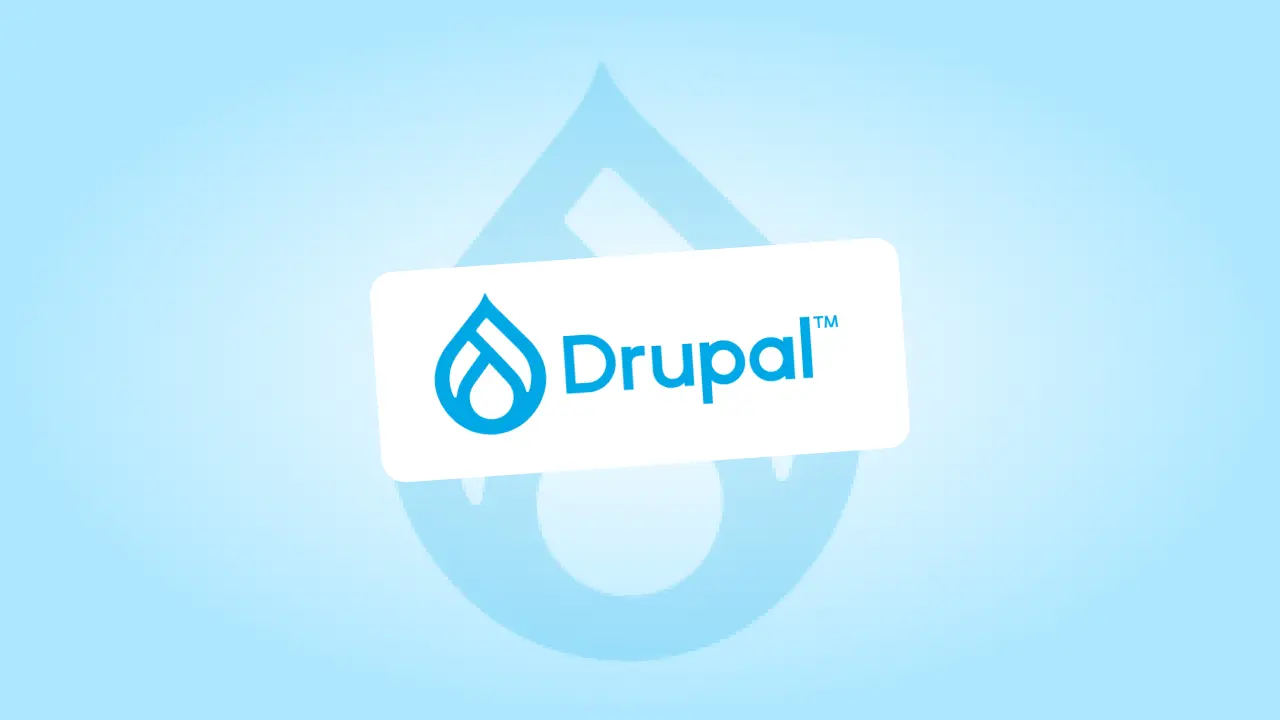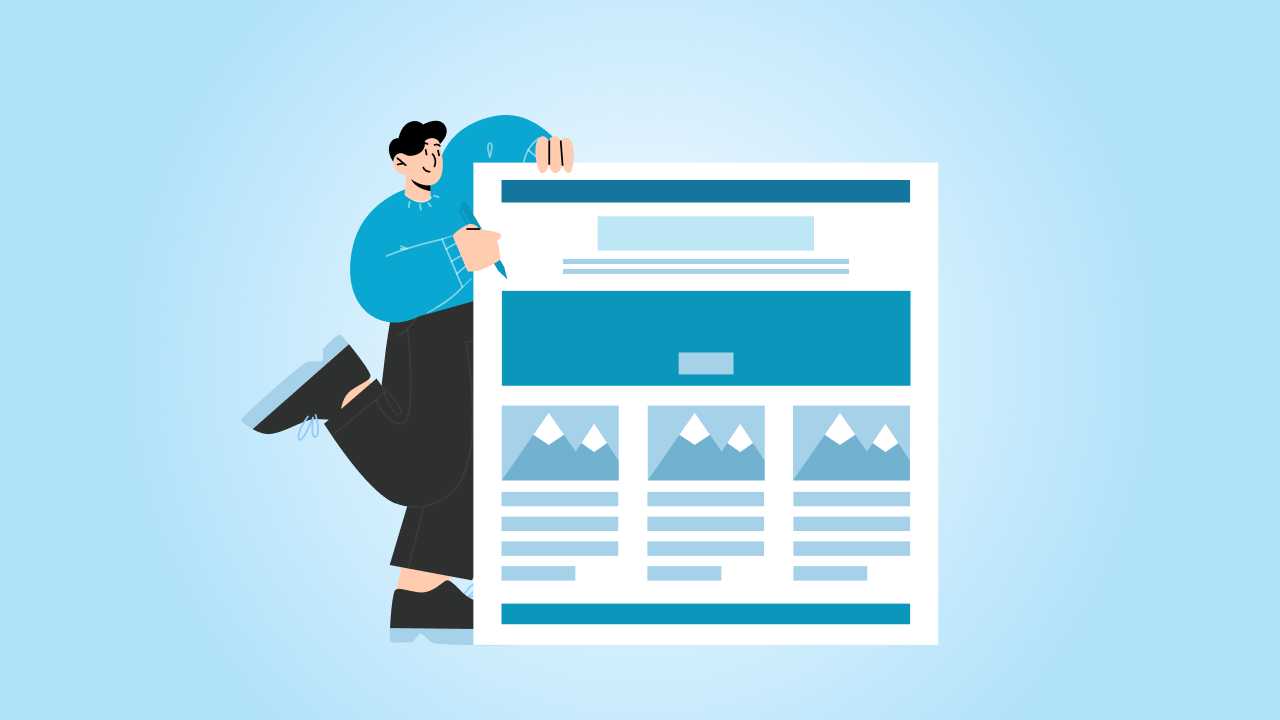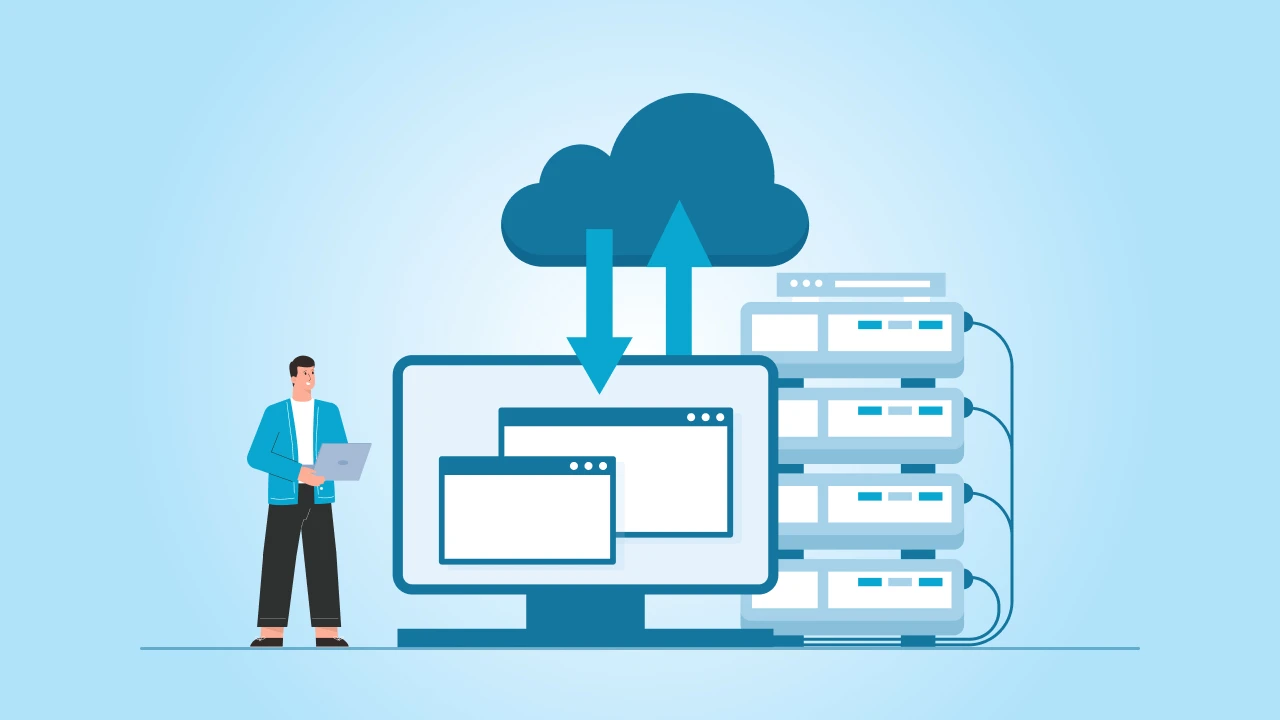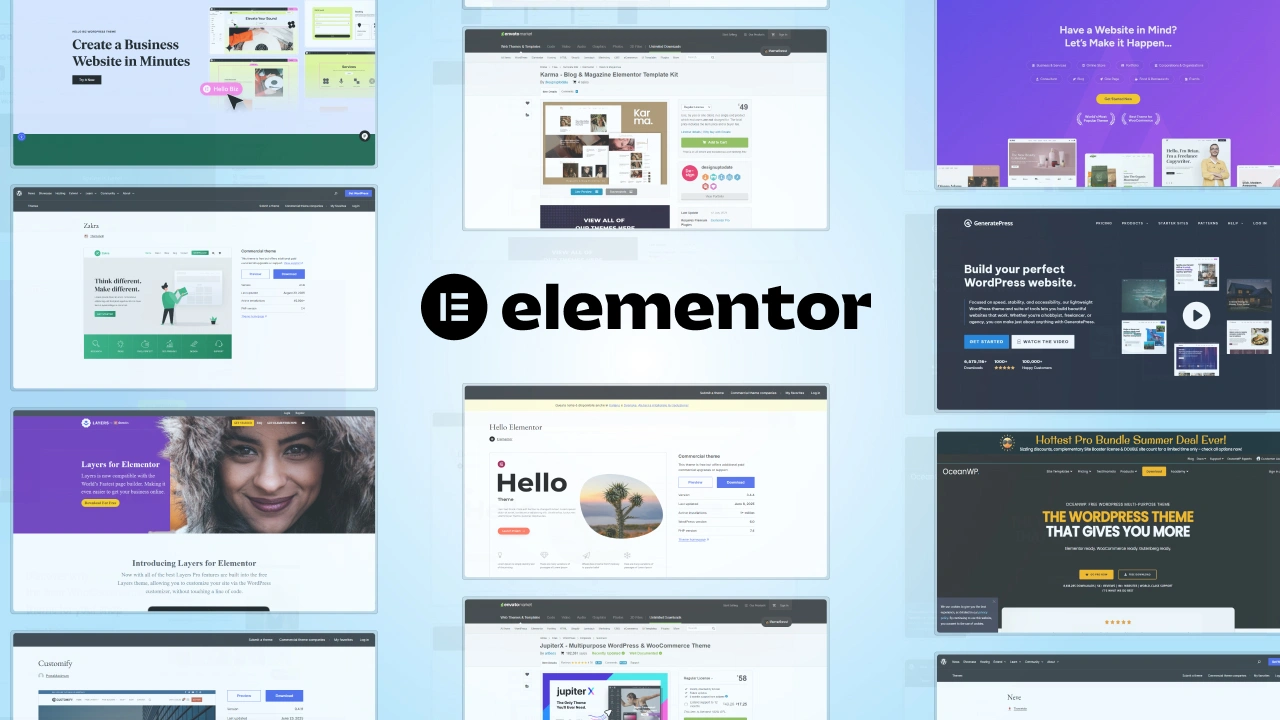If you have been looking into CMS platforms, you must have heard of Drupal.
But here’s what you need to know- Drupal isn’t just another content management system—it’s a platform that’s quietly powering some of the world’s most dynamic websites.
What’s more interesting about Drupal is how it strikes a balance. For instance, it’s flexible enough to handle ambitious projects yet practical for businesses that need something dependable and future-proof.
From global organizations to niche communities, Drupal has found its way into the hands of people who want more than just a website— a platform that grows with them.
So, what exactly is Drupal? And why do so many rely on it?
In this guide, we will take a closer look at its features, its unique strengths, and how it could be the perfect match for your needs.
What is Drupal?
In simple terms, Drupal is a content management system (CMS) that helps you build and manage websites without needing to dive too deep into complex coding.
You can think of it as a toolkit that gives you everything you need to create, customize, and maintain a website. Whether you are running a small blog, a business website, or a large enterprise portal, Drupal adapts to your needs.
At its core, Drupal is open-source, which means it’s absolutely free to use, modify, and share. This gives developers and businesses the complete freedom to tailor it exactly the way they want—no restrictions, no hidden catches.
Evolution: A Quick Timeline of Drupal’s Journey
Drupal’s story began back in 2000 when Dries Buytaert, a Belgian student, created it as a simple message board. By 2001, it evolved into an open-source project, quickly gaining traction among developers looking for a flexible CMS.
- Drupal 4 (2002): The first widely adopted version, introducing basic CMS functionalities.
- Drupal 7 (2011): A game-changer with improved user interfaces and enhanced performance.
- Drupal 8 (2015): Marked a shift towards modern web development practices, integrating Symfony and adopting an API-first approach.
- Drupal 9 (2020): Focused on cleaner code, better performance, and seamless upgrades.
- Drupal 10 (2022): Built for the future with a sleek new admin theme and better developer tools.
Through this journey, Drupal has become a trusted name for websites that demand scalability, flexibility, and security.
The Open-Source Advantage: What Sets Drupal Apart
What makes Drupal stand out is that it’s open-source. Unlike some proprietary CMS platforms that lock you into expensive licenses and limit how much you can customize, Drupal gives you complete freedom to make it your own.
Here’s why that matters:
- Cost-effective: No license fees mean you can allocate your budget towards customization and enhancements.
- Community-driven: With thousands of developers contributing, Drupal is constantly improving.
- Unrestricted innovation: You’re free to build, modify, and integrate with other systems however you like.
Reach out to our team at cmsMinds and let’s build something amazing together.
Key Features That Make Drupal Stand Out
1. Scalability: Built to Grow with You
You are running a small blog or overseeing a huge enterprise site, Drupal is built to handle both. It’s designed to grow with your needs, so your website won’t slow down even if traffic suddenly goes through the roof or you need to add a ton of new content. Whether you have just a few pages or thousands, Drupal keeps everything running smoothly.
2. Customization: Tailored Just for You
One of Drupal’s biggest strengths is its flexibility. With literally thousands of modules and themes available, you can customize everything—from how your website looks to how it works. On the plus side, developers can even create their own modules to add unique functionalities. This makes Drupal a perfect choice for businesses that want a website tailored to their exact needs.
3. Security: Trusted by the Best
Drupal is a top choice for government, finance, and enterprise websites for one key reason—security. It has a fully dedicated team of experts who regularly release updates and patches, making sure your website stays protected against vulnerabilities. If data privacy and security are your priorities, Drupal has you covered.
4. Multilingual Capabilities: Speak to the World
Need a website that connects with audiences in multiple languages across the globe? Drupal makes it super easy. With built-in multilingual tools, you can create content in multiple languages, manage translations, and cater to a global audience—all without the need for extra plugins or workarounds.
5. API-first Architecture: Ready for the Future
Drupal’s API-first approach makes it perfect for modern web development. In other terms, it allows seamless integrations with other platforms, apps, or services and even supports headless CMS setups. This means you can use Drupal to manage your content while delivering it across multiple channels, like websites, mobile apps, and more.
When Should You Consider Drupal?
Honestly, there are plenty of CMS platforms out there, but Drupal shines in certain aspects—especially when flexibility, security, and scalability are at the top of your wish list. Here are a few moments when Drupal really proves its worth:
- Large-Scale Projects: If you are managing a site that needs to handle loads of content or massive traffic, Drupal is built to keep everything running smoothly. Its architecture grows with you, so you don’t have to worry about your business outgrowing your platform.
- High-Security Needs: Organizations that deal with sensitive information (like government agencies, financial institutions, or healthcare providers) often choose Drupal for its proven track record. Thanks to a dedicated security team and frequent updates, you can count on Drupal to guard your data.
- Complex Customization: Need a website that does more than just display information? Drupal’s modular structure makes it easier to add or remove features to fit your vision. From eCommerce setups to community-based sites, you have the freedom to build exactly what you need.
- Global Reach: Planning to cater to audiences in multiple languages? Drupal’s built-in multilingual capabilities make it straightforward to manage content in different languages, so your site can truly connect with people around the world.
Comparing Drupal with Other CMS Options
- WordPress: Great for simpler websites or blogs, but might need extra plugins for enterprise-level security or very specific features. Drupal, on the other hand, offers these capabilities out of the box.
- Joomla: While Joomla has decent flexibility, Drupal generally handles large projects and complex customizations more smoothly. It also offers a richer set of modules for advanced functionality.
Ultimately, if you need a platform that balances power, security, and scalability, Drupal stands out from the crowd. It might take a bit more to learn compared to some other CMS platforms, but the payoff in features and reliability can be well worth it.
Real-world Examples
Sometimes the best way to see Drupal’s true power is by looking at who’s actually using it. And trust me, some pretty big names have hopped on board:
- The White House: For a while, the official White House website ran on Drupal, taking advantage of its robust security and stability. Even with millions of visitors checking in, the site stayed fast and reliable, which shows how well Drupal handles heavy traffic.
- NBC: This major broadcasting network uses Drupal to manage a massive amount of content and deliver it across multiple platforms. By leveraging Drupal’s flexibility, NBC can easily organize and update news stories, videos, and other media—keeping everything on brand and schedule.
- Harvard University: With countless departments and thousands of students, Harvard needs a CMS that can grow and adapt. Drupal’s multisite functionality allows each department to have its section while still maintaining a consistent look and feel across the entire university network.
In each of these cases, Drupal’s mix of scalability, security, and customization plays a huge part in making these organizations’ websites run smoothly—no matter how large or complex they may be.
Addressing Common Misconceptions
Is Drupal Too Complex for Small Businesses?
Well, it’s true that Drupal often gets praised for handling large, complex websites. But at the same time it doesn’t mean small or mid-sized businesses can’t benefit from it too. If you have got a smaller operation, you can absolutely start with a simpler setup. Then again, as your business grows, Drupal can grow with you. So, you are not stuck rebuilding your entire site down the road.
Is Drupal Only for Developers?
Yes, Drupal does offer a ton of advanced tools for those who love to dive into intricate code, but that doesn’t mean you need a full-fledged Drupal development services team just to manage content. Many site owners find it pretty straightforward to handle everyday tasks—like adding blog posts or updating pages—once their site is set up. And if you do need custom features, there’s a robust community (and countless modules) ready to help.
How to Get Started with Drupal
Just hearing about Drupal can sometimes feel a little overwhelming, but getting set up is easier than you might think. Here are a few simple steps to help you hit the ground running:
- Pick a Reliable Hosting Provider: You will need a hosting provider that’s Drupal-friendly. Look for one that supports PHP, offers a good amount of bandwidth, and has an easy way to install Drupal. Most popular hosting services have a one-click Drupal install, so you don’t have to mess around with too many manual steps.
- Install Drupal: Once you have settled on hosting, you can install Drupal. Some hosts give you that handy one-click option, while others might require you to upload Drupal files and set up a database. Either way, you will be guided through a few prompts, and then you are good to go.
- Add Modules for Extra Functionality: Drupal comes with core modules that cover the basics—user management, content creation, site structure, and more. But if you want to customize your site further, check out Drupal’s library of contributed modules. Need an event calendar? There’s a module for that. Want advanced SEO features? There’s a module for that too.
- Look for Themes: If you are not a designer, no worries—Drupal has loads of themes you can apply with a few clicks. You can also tweak the theme’s appearance to match your brand or style preferences.
- Consider Hiring an Agency: If you have a complex project in mind or just don’t have the time to handle everything yourself, working with a Drupal-focused agency can be a game-changer. They will help with everything from strategy and design to development and ongoing support. Plus, you will have peace of mind knowing experts are handling the nitty-gritty details.
- Tap into Resources for Beginners:
- Drupal.org: Your go-to hub for documentation, module downloads, and all things Drupal-related.
- Community Forums: If you ever get stuck or want some insider tips, the Drupal community is incredibly active and helpful.
- Drupal Meetups and Events: Check for local gatherings or online events to learn best practices and connect with fellow Drupal users.
Conclusion
Whether you are running a small and simple blog or a large organization, Drupal’s flexibility, security, and strong community support will give you a plenty of room to experiment and expand. And If you are searching for a platform that won’t hold you back and can keep up with your evolving needs, then you should give Drupal a closer look. You might just find it’s the missing piece you have been searching for.
Drop us a line at cmsMinds, and we’ll work with you to create a solution that really fits your goals.





